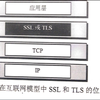RUL estimation suffers from a server data imbalance where data from machines near their end of life is rare. Additionally, the data produced by a machine can only be labeled after the machine failed. Semi-Supervised Learning (SSL) can incorporate the unlabeled data produced by machines that did not yet fail. Previous work on SSL evaluated their approaches under unrealistic conditions where the data near failure was still available. Even so, only moderate improvements were made. This paper proposes a novel SSL approach based on self-supervised pre-training. The method can outperform two competing approaches from the literature and a supervised baseline under realistic conditions on the NASA C-MAPSS dataset. Nevertheless, we observe degraded performance in some circumstances and discuss possible causes.
翻译:RUL估计存在服务器数据不平衡的情况,因为来自接近寿命末期的机器的数据很少。此外,机器产生的数据只能在机器失灵后贴上标签。半高级学习系统(SSL)可以纳入尚未失灵的机器产生的未贴标签的数据。以前关于SSL的工作在数据接近失灵的情况下,在不现实的条件下评估了它们的方法。即使如此,也只作了一些微小的改进。本文件提出了基于自我监督的训练前训练的新颖的SSL方法。该方法可以超越文献中两种相互竞争的方法,并在美国航天局C-MAPSS数据集的现实条件下有一个受监督的基线。然而,我们观察了某些情况下的退化性能,并讨论了可能的原因。



